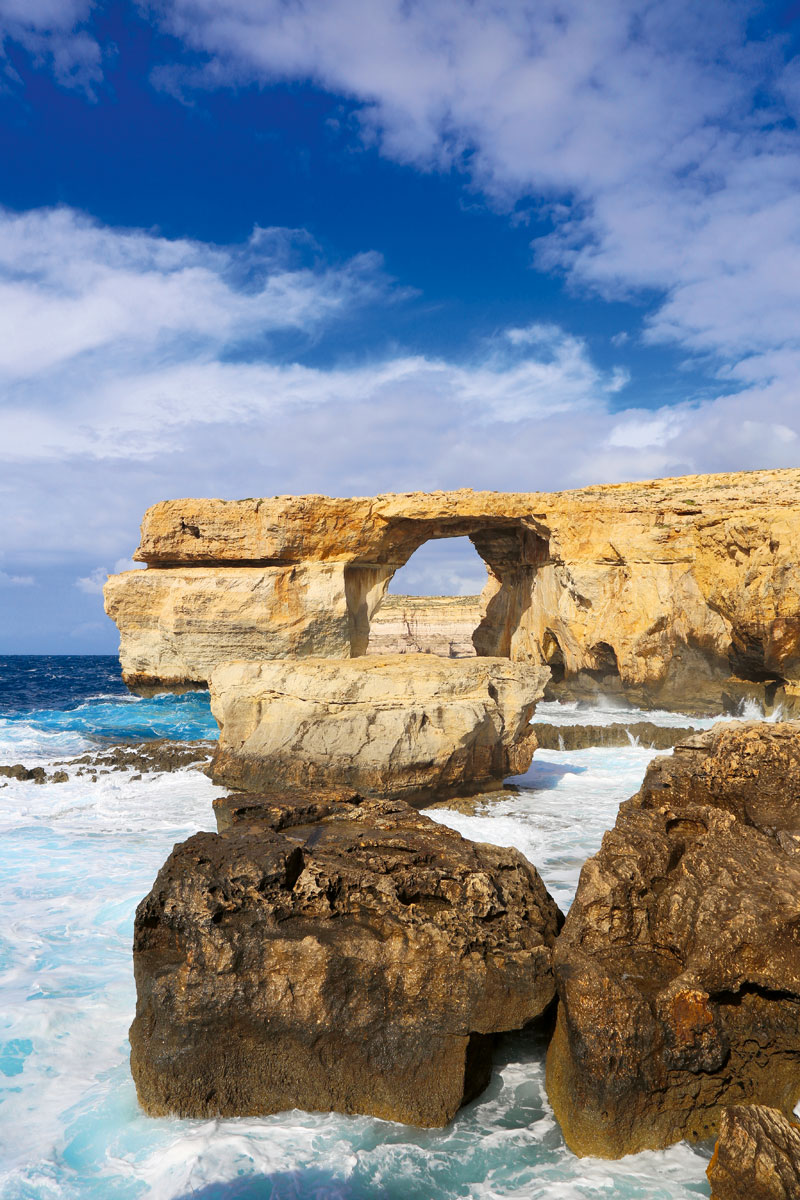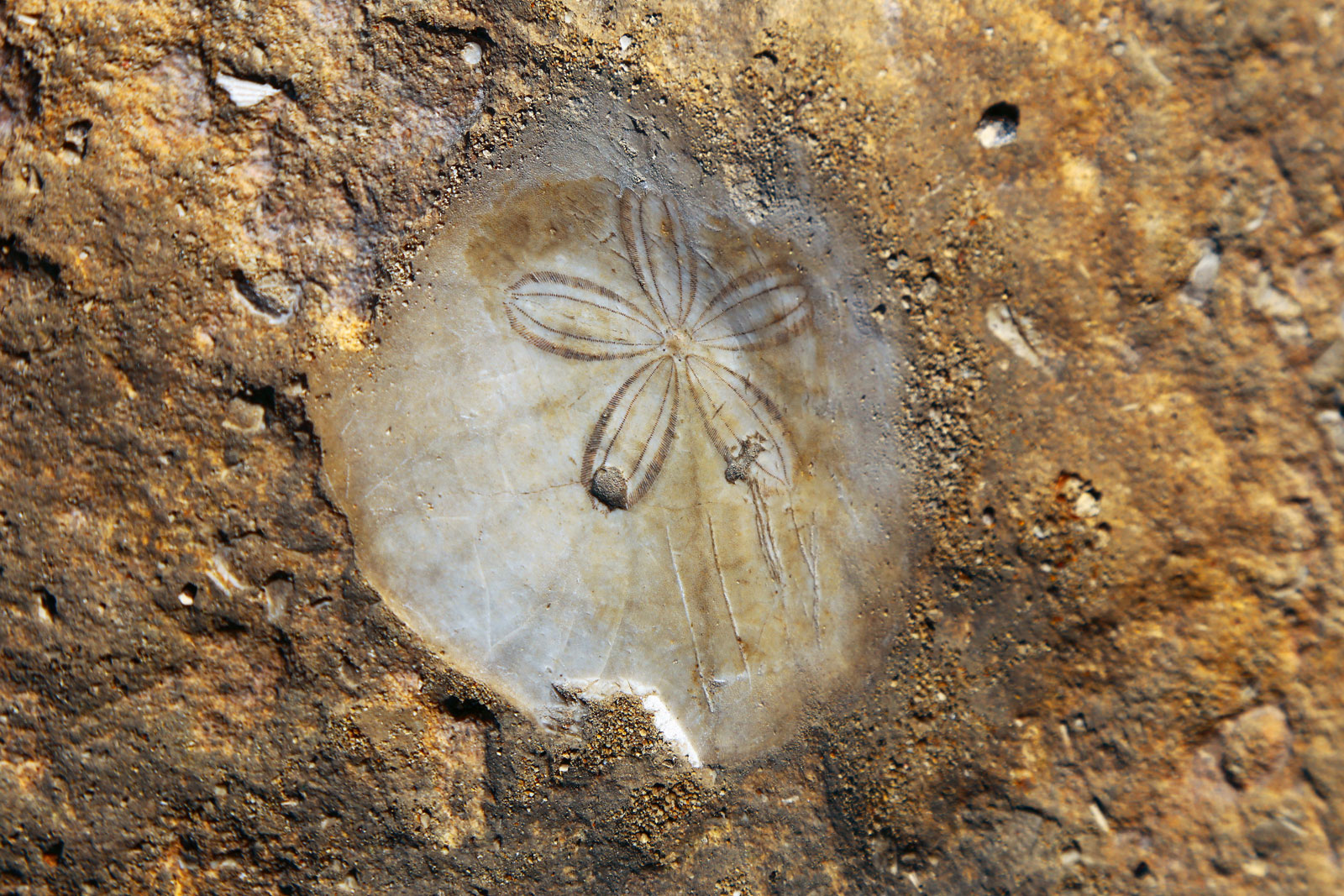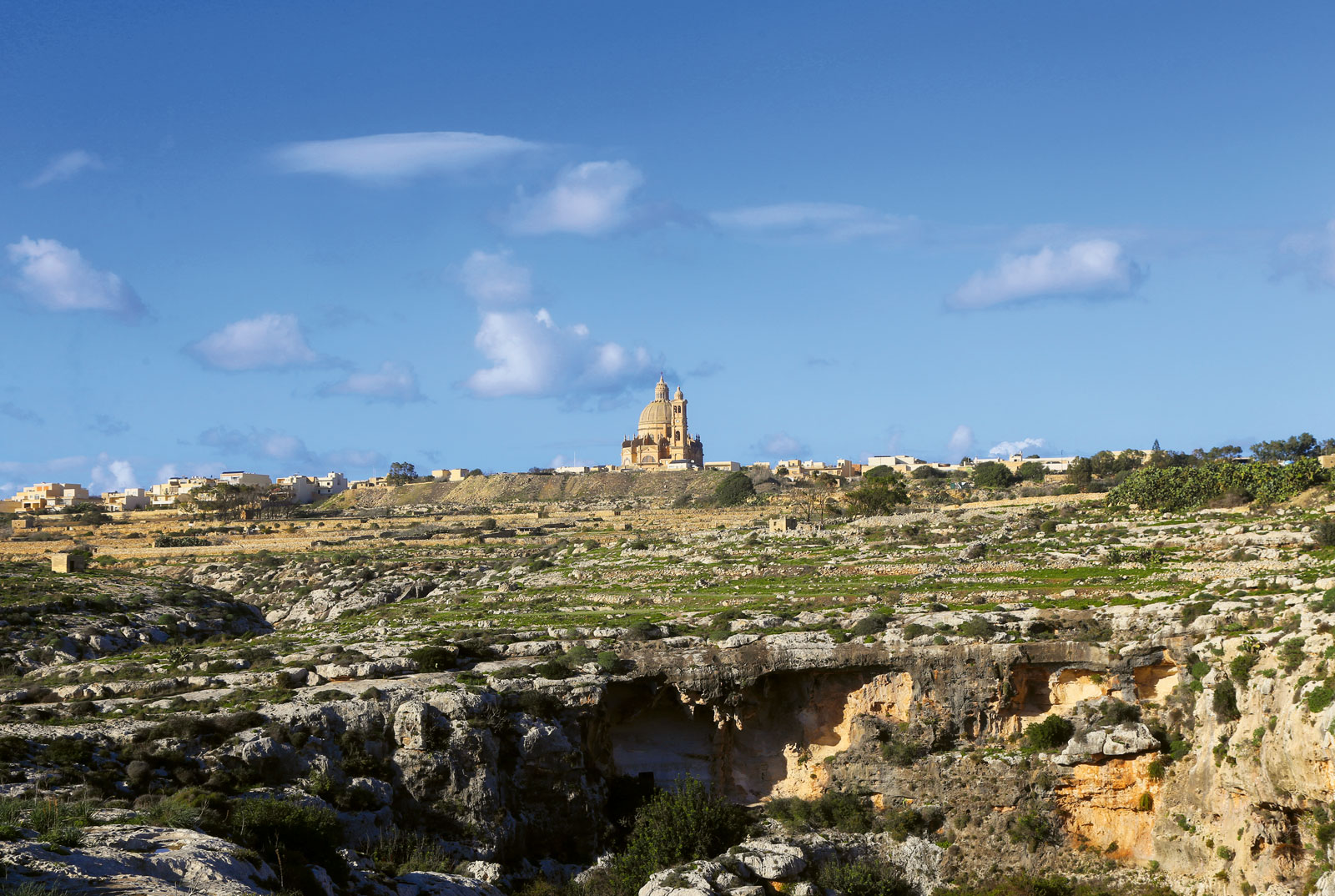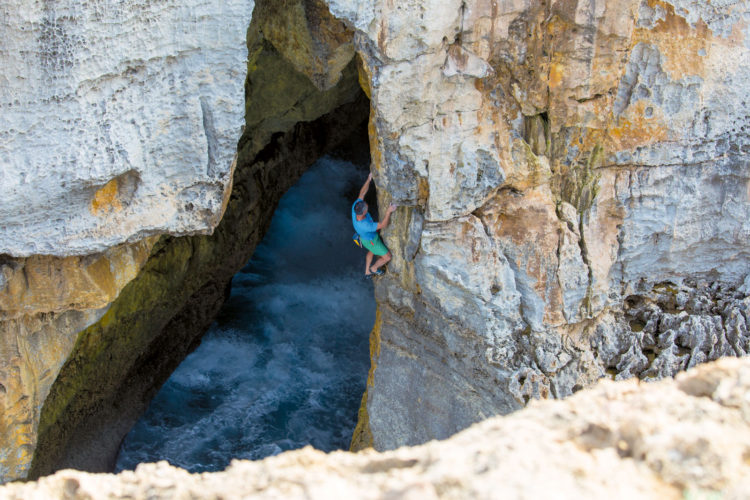I’ll be the first to admit that my preconceptions of Malta were that of a staid island, with heaps of history and a hot ticket for retirees. Its heritage speaks for itself: the archipelago has been inhabited since 5,000BC and is home to some of the oldest freestanding monuments in the world. Paradoxically, nowhere does the island’s history converge more profoundly with the present than in its fossilised-encrusted cliffs, which are attracting an altogether more adventurous and youthful community: rock climbers.
Despite being mountainless and just 253 metres above sea level, 60 per cent of Malta’s coastline is cliff, and this is where you’ll find its throng of vertical thrill seekers – dangling precariously from the roof of a sea cave, or abseiling into the bowels of the ocean. But the action doesn’t all happen at sea. The island’s rugged, inland limestone crags, carved from glaciers in former ice ages, are primed with dramatic and steep routes too. This weather-sculpted terrain, combined with high quality limestone rock that’s rich in holds, have made it a veritable playground for climbers of all levels.

Locals don’t call it the ‘the rock’ for nothing. The sheer variety of climbing, from sea level traversing,to sheltered climbing in deep gorges and steep overhangs in sinister caves, is immense for an island measuring just 27kmx14km. By default, its diminutive size has also been its greatest climbing asset – the longest walk-ins, even to remote crags, are around 15 minutes, making it entirely possible to squeeze in an hour of culture between climbs. Its even smaller and sleepier sister island, Gozo (a 30-minute ferry ride away) boasts 350 routes, ranging from nine metres to some 60-metre monsters, and one of the biggest overhangs in the world: King of Kings.
Surprisingly (and much to the delight of its 250-strong local climbing community), the island is still relatively unknown as a climbing destination compared to the likes of the South of France and Northern Italy. There are estimated to be in the region of 10,000 climbers visiting annually – a number set to inflate, since world-class talent Tommy Caldwell – of Dawn Wall fame – began chalking up the crags. The international climbing community is certainly warming to the sunshine island – international bouldering competition Melloblocco’s Simone Pedeferri visited just last year and, more recently, members of the Dutch Ice Climbing Team, along with their dachshund Ooinn, descended on its enviable limestone rock.
Long before the likes of Caldwell and Pedeferri were christening routes like X-Factor and Club Paradiso on Gozo, bare-footed Maltese fishermen were soloing down the same precarious cliffs (minus the fandangled equipment). Searching for food, these formidable men, described as “dwarfed fishermen with giant forearms” by local climbing heavyweight Stevie Haston, would solo down loose rocks on a hemp rope, without a harness and a bucket of fish on one arm. Occasionally you can still see one or two at Pillar Box Cave, negotiating the 60m cliff, just like the old days.
It was actually the British Royal Commandos, stationed here during the 1950s and ’60s, that evolved rock climbing into a pastime on the island. But by the mid-’70s, the scene had plateaued, and wasn’t revived until local lad Andrew Warrington (now president of the Malta Rock Climbing Club) and a group of friends took up climbing in 1985, unlocking its ‘trad route’ potential. But what really took it mainstream was the introduction of sport climbing in 2005, and the evolution of a two-pronged climbing ethic: sport (using fixed bolts for protection) and traditional (using temporary hardware to ascend), which engaged an even wider audience. Two years later, the definitive island climbing guidebook: Malta Rock Climbing (co-authored by Warrington) was published, and cemented the archipelago’s status as a serious climbing destination.
Warrington, who’s also a guide leader at MC Adventures, attributes the island’s climbing diversity, together with Malta’s 300-days-a-year sunshine, to the sport’s success and longevity. Multi-season climbing doesn’t get much better: whilst keeping dry on the walls during its mild winters is practically a given, getting wet in the heat of the summer is all part of the fun.
Increasingly popular is Deep Water Soloing, aka climbing minus ropes with just the azure waters to catch your fall. Look in any Maltese climber’s rucksack and you’ll probably find a pair of flippers, packed for that post-climb snorkel.
All this begs the question – is Malta’s expanding climbing culture set to finally burst the Game Of Thrones bubble? There is every possibility. With an ambitious bolting project underway to equip 400 of the island’s climbs with special sea-spray resistant bolts, the sky really is the limit.
Cinematic Setting

Gozo’s very own star of the silver screen, the Azure Window, is one of the island’s most iconic and photogenic landmarks. Sadly, the collapse of this 30-metre-high, monumental rock formation is inevitable, and imminent. A combination of natural erosion, recent seismic activity and rebellious cliff divers has destabilised its natural arch, causing sizeable chunks of rock to collapse into the sea.

A Hand in History

It’s not uncommon to pull up on a bit of fossilised sea urchin whilst scaling Malta and Gozo’s prehistoric sea cliffs. Millions of years ago the entire island was submerged, yielding fossilised-studded rocks, rich with oyster shells, sea urchins, seaweeds, worm holes, triton shells and the occasional shark tooth.
CliffHangers

Head 5km north along the coast from the mesmerising Azure Window, and you reach another dramatic sea arch: Wied il-Mielah. The Azure’s fate may be sealed, but this rocky arch is reassuringly stable, boasting plenty of big holds and eight routes, that make it a great spot for beginners to cut their teeth. Rappelling is popular, as is taking a refreshing summertime dip between climbs in the Med’s cobalt blue waters.
Faith and Footholds

Dramatically bisecting the landscape, Mgarr ix-Xini’s stunning canyon setting on the southern coast of Gozo is a climber’s paradise. Green year-round, the cliff sides are riddled with karstic features, prehistoric remains and even an abandoned water-pumping station that used to supply fresh water to the entire island. Like a beacon of faith on the horizon, the Xewkija Church (fashioning the world’s third largest unsupported dome) makes for a scenic 10-minute walk-in to the gorge’s shady climbing walls: Flake Out, Champagne and Dream.
King of the Crags

Known to have some of the finest forearms in the game, Gozitan-born Stevie Haston’s (left) credentials speak for themselves. This wall warrior has soloed up to 80 routes in the Alps, including the north face of the Eiger (aged 20), and the first one-man ascent of the Walker Spur on the Grandes Jorasses. Instrumental in shaping Gozo’s burgeoning climbing scene, the 58-year old has not only actively bolted over 50 routes on the island, but also routed one of the world’s longest roof climbs; The King of Kings, which extends 55 metres.



